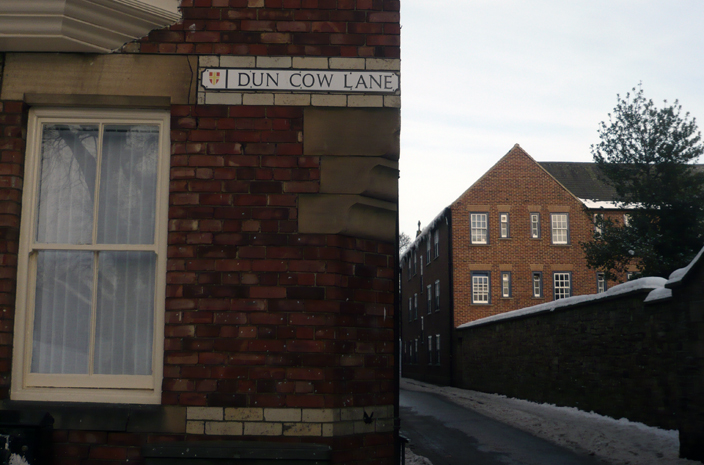Dun Cow Lane and its Buildings
Dun Cow Lane takes its name after a legendary Dun Cow that led the community of St Cuthbert to Durham in 995. Find out more about the Story of the Dun Cow.
Castle Walls
Although today an easily accessible lane leading up to Durham Cathedral, Dun Cow Lane once separated the outer and inner Baileys. There once would have been a gate running across the lane, with a gate in the middle. Today, the gate has disappeared, but remains of the wall can still be seen incorporated into the structure of Abbey House.
A Corner Nobody Notices
The building at the corner of Dun Cow Lane has an interesting architectural feature: a chamfered (angled) corner. Often, when buildings were located at the intersection of two narrow streets, the corner was angled to make the flow of traffic easier, and to protect the building from damage caused by vehicles scraping its façade.
Once above the reach of traffic, a standard right-angled corner could be used, and stonemasons often came up with decorative ways of joining the angled, lower section of the building with the right-angled upper section.

The chamfered corner on Dun Cow Lane. Chamfered corners were a clever technique of preventing a corner building from getting in the way of traffic.

